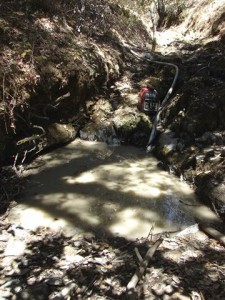Most projects do have some impact upon the surrounding environment. We have worked with hundreds of clients to develop mitigation plans that avoid, minimize, repair or restore, reduce over time and/or compensate for this impact.
 We have found that the least expensive approach is to mitigate on site whenever possible. This means the focus is repairing, rehabilitating or restoring the affected environment. For example, the plan may include planting trees, preserving wetlands, or even planting at an alternate site to achieve the required mitigation.
We have found that the least expensive approach is to mitigate on site whenever possible. This means the focus is repairing, rehabilitating or restoring the affected environment. For example, the plan may include planting trees, preserving wetlands, or even planting at an alternate site to achieve the required mitigation.
Your project may also be required to take steps to reduce or eliminate the impact over time by, for example, adopting certain ongoing operational practices that will preserve and maintain the benefit of restoration steps taken during initial construction.
Compensatory mitigation or mitigation banking may also come into play.
These are programs intended to offset known impacts to a historic site or natural resource such as a wetland, stream or endangered species. In basic terms, there is an environmental crediting system established by federal and state governing agencies which involves offsetting destruction or damage to a natural resource (“debits”) by contributing to a much larger mitigation project (“credits”). What this means is that in selected circumstances you can mitigate the damage your project may cause to the environment by purchasing credits from a “mitigation bank.”
Environmental restoration and preservation is the goal of the mitigation planning process. Mitigation is typically a high priority consideration for the life of any project, beginning with initial planning, continuing through construction and then future operations. On site mitigation is always the first choice, but other alternatives exist.
Compliance Solutions can help ensure your project goes forward with the best balance between minimal impact upon the environment and the most cost effective mitigation plan. Give us a call.

